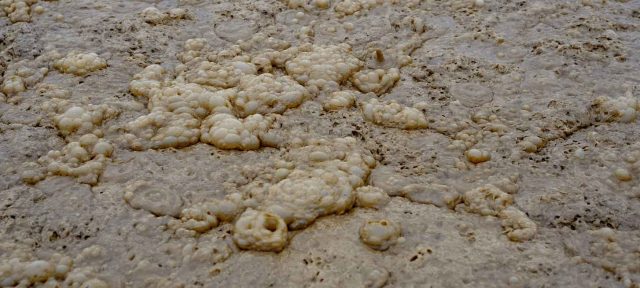When water flows from the earth into a river or other natural watershed, it passes through layers of vegetation, with leaves and roots, through layers of soil, gravel, and sand. Each of these layers, being of a different density and makeup, filters contaminants of various types until the water flows clean. This was how water filtration was done in nature before industrialization. Plants and their roots and soil were not expecting to deal with loads of heavy metals, carcinogens, and pathogens such as we are dealing with today in our waterways.
Industrial processes have been developed to clean and treat air and water pollution, and the end result of these filtrations is, according to the EPA, sludge. Sludge is the result of wastewater treatment, air pollution treatment, and other water and air filtration processes. It is usually processed by ‘curing’, or being allowed to age, which degrades and decreases the biological contaminants. Wastewater or sewage treatment plants use their filtered sludge as an ingredient in commercial compost.
We all have a desire to see a safe and productive food system. The safety of that system may be compromised by the use of sludge as agricultural soil amendments that have not been filtered and cleaned as much as possible before being used to grow our food.
Water on the earth is a closed system. That means that the water we have is endlessly recycled and reused. We don’t have any extra that can be thrown out with the hazmat. So when our water and soil is contaminated with heavy metals, especially, which do not biodegrade, we can use nature’s example to develop filtration systems that can deal with the end products of industrial contamination. This filtration is critically important to our healthy soil and water.
HAZMAT sludge filters are designed, like layers of gravel and sand, to filter out and allow sequestration of heavy metals from sludge. The goal of the materials and process is to remove the greatest amount of hazardous material possible while allowing the return of healthy air and water to the ecosystem. Belton’s HAZMAT Sludge filter cloth is engineered for sludge dewatering tubes and provides filtration, dewatering, containment sequestering, UV protection, and beach re-nourishment projects. The Beltech 4 x 6 Black and Beltech 4 x 6 Tan are high strength fabrics used specifically for these applications.
We would love to partner with you on a project involving HAZMAT sludge filters. Contact us to learn more.

